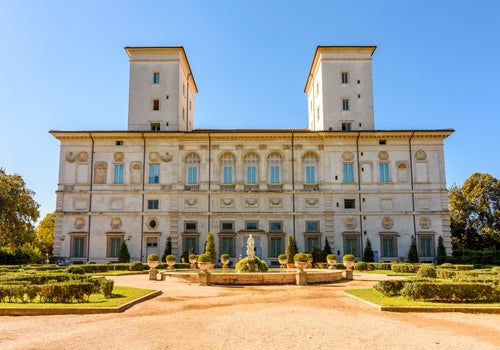The Basics
Rome, Italy, is one of those must-see destinations — a city with a history that shaped Europe and the world for centuries. Whether you love classical architecture, art, amazing shopping, religious history, or incredible food, the Eternal City will exceed your expectations.
Currency
The Euro is the official currency in Rome, with an average exchange rate of €1.00 to USD 1.06. While credit cards are widely accepted in Rome, many stores and restaurants still use cash as the main form of payment. ATMs offer the best exchange rates.
Time Zone
Rome is in the Central European Standard Time zone, making it six hours ahead of Eastern Standard Time. 11.00 Sunday in New York, New York is 5.00 am Monday in Rome, Italy.
When to visit Rome
When is the best time to travel to Rome, Italy? Here’s how Rome looks to visitors throughout the year:
October to April sees fewer tourists, and while you should pack some warm clothing, temperatures rarely drop below freezing.
- October to April sees fewer tourists, and while you should pack some warm clothing, temperatures rarely drop below freezing.
- May is warmer, with fewer room deals but without crowds of tourists
- June to August sees the most crowds and the highest room rates. The weather turns hot and humid, which, combined with the crowds, can make exploring the city uncomfortable. Make hotel reservations for this period at least six months in advance.
- September sees fewer tourists and more comfortable temperatures.
Airport Options
Fiumicino Airport (FCO) lies 20 miles southwest of Rome in central Italy’s Lazio region. The A91 highway leads from Fiumicino to Rome. If you're traveling by shuttle or private transfer the trip takes about 40 minutes on a dedicated lane.
Ciampino Airport (CIA) is located 12 miles south southeast of Rome’s city center, just outside the Grande Raccordo Anulare (Greater Ring Road) that circles the city.
Things to do in Rome
First-time travelers tend to visit Rome’s most famous attractions — the Colosseum, the Pantheon, the St. Peter’s Basilica, and the Sistine Chapel. By all means, take in these sights, but remember you can find many other things to do in Rome. Checking out less popular but no less fascinating sights and sites is one of the best Rome travel tips we can suggest.
- The Borghese Gallery is home to classic art by Bernini, Titian, Raphael, and Caravaggio. The gallery sits in a beautiful garden and is housed in a former villa.

- The Capotoline Museum is the world’s first known museum and houses the famous sculpture of Rome's mythical founders Romulus and Remus

- Trajan’s Markets is considered the world’s first shopping complex. Discover how people shopped millenia ago.

- The only ancient pyramid in Europe, the Pyramid of Cestius is a 2,000-year-old tomb built for Roman senator and general Gaius Cestius.

- Palatine Museum houses an intriguing collection of Roman artifacts recovered from the palaces and homes that adorned Palatine Hill, including a rare bust of Emperor Nero.

- The Via dei Coronari is lined with little antique dealers, selling everything from estate jewelry and Roman artifacts to exquisite furniture.

- A chance to learn to fight like a gladiator is one of the most unique things to do in Rome. The Gladiator School of Rome, located on the Via Appia Antica, offers two-hour classes where you can learn ancient sword fighting skills.
- Enjoy Roman architecture and landscaping at the little-visited Horti Sallustiani. Explore a garden once owned by Julius Caesar, and discover fountains, ancient temples, and statues.
How to get around Rome
The best ways to get around Rome are by bus, the Metro, and the city’s Ferrovie Urbane train lines, or on foot. Travel by taxi is expensive, and driving in Rome, as we said, is not recommended. Rome is not a car-friendly city.
Where and what to eat in Rome
When it comes to unforgettable meals, Rome is on par with Paris. The city serves a wide array of must-try menus, from the casual atmosphere of cozy cafes and food markets to high-scale dining.
If you want to try the best in Rome street food, visit the Testaccio Market, where local vendors sell everything from panini to gelato from their stalls.
With so much to see, do, and eat in Rome, it’s reasonable to wonder how long to stay in Rome to get the most out of your trip. You should spend at least five days or more in the Eternal City. Shorter visits will allow you to take in the most popular sights but limit how much you can do. No matter how long you choose to stay in Rome, the city will have more secrets awaiting to lure you back year after year.



